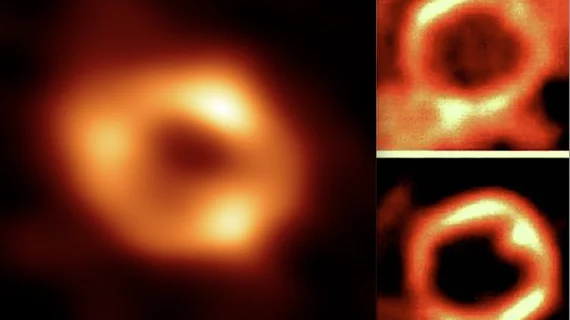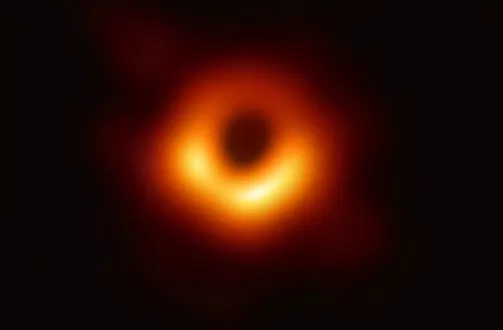Cardiologist and ASNC president diagnoses the heart of the galaxy based on black hole imaging
The first image of the black hole at the center of our Milky Way galaxy released May 12 amazed the scientific community. However, cardiologists were left with questions about the true health of the galaxy.
The immediate takeaway for most cardiology imagers and radiologists when they saw the historic black hole image was the amazing similarity to nuclear myocardial perfusion imaging (MPI) used to assess cardiac function. For them, this image was nothing new because they have been looking at similar nuclear imaging hazy, brightly colored images for decades to diagnose the severity of heart disease.
The medical nuclear imaging modalities of single photon emission computed tomography (SPECT) and positron emission tomography (PET) are used to see the metabolic activity in the muscle of the heart. This can show show areas of ischemia with lower metabolism and blood flow, and infarcts caused by heart attacks, where there is no metabolism or blood flow, which causes the tissue to die.
Cardiovascular Business asked the experts at the American Society of Nuclear Cardiology (ASNC) about their opinion on the heart of the galaxy based on what appears to be a galactic MPI exam.
"I think the image of the heart of the galaxy looks like a SPECT or PET MPI with some motion artifact," explained Dennis A. Calnon, MD, FACC, FASE, MASNC, FSCCT, president of the ASNC and director of nuclear imaging at OhioHealth Heart and Vascular Physicians.
In medical imaging, motion artifact makes the imaging exam sub-optimal, but Calnon said this appears to be good news for the Milky Way.
"I take this as good news in that there is motion in the heart of the galaxy and things are constantly changing. It is a nice reminder to all of us that all of us here on earth need to continue to expect and accept change and continue to adjust our thinking. It is also a reminder of the size of the universe and that we here on earth are all in this together," Calnon said.
PET and SPECT imaging can be improved when combined with computed tomography (CT) in hybrid SPECT-CT and PET-CT imaging systems.
"We always favor using attenuation correction whenever possible, though attenuation correction cannot eliminate motion artifact," Canon said. "Plus, attenuation correct is a bit less relevant here as the photons are for the most part traveling through the vacuum of space."
Imaging the heart of the Milky Way galaxy
Astronomers last week unveiled the first image of the supermassive black hole at the center of our Milky Way galaxy, which shows for the first time evidence that the object is indeed a black hole. The image was produced by a global research team called the Event Horizon Telescope (EHT) Collaboration, using observations from a worldwide network of radio telescopes.
Scientists had previously seen stars orbiting around something invisible, compact and very massive at the center of the Milky Way. The new image provides the first direct visual evidence of it.
Because the black hole is about 27,000 light-years away from Earth, it appears to us to have about the same size in the sky as a donut on the moon. To image it, the team created the powerful EHT, which linked together eight existing radio observatories across the planet to form a single “Earth-sized” virtual telescope. The EHT observed black hole (named Sgr A*) on multiple nights, collecting data for many hours in a row, similar to using a long exposure time on a camera.
The bright circle of light is the event horizon of the black hole where matter is being sucked into the galactic giant, beyond this it is black as the speed at which matter it pulled in is faster than the speed of light so not even light can escape.
Read more about the discovery.
This is the second image a black hole by this team. The first image in 2019 of the Messier 87 (M87) black hole had a much clearer cardiac diagnosis of ischemia.


